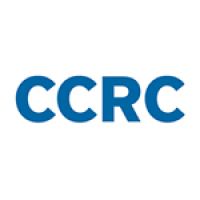This essay originally appeared in Inside Higher Ed.
By John Fink and Davis Jenkins
For community colleges and their students, the pandemic has created a perfect storm threatening enrollments and access. To build back enrollments and counteract declines in college-going disproportionately impacting low-income and communities of color, colleges are redoubling efforts to expand on-ramps to their baccalaureate transfer and workforce programs. At most community colleges, one large but often overlooked pool of baccalaureate-seeking students already have a foot in the door: high school dual enrollment students.
Dual enrollment (DE), or dual credit/concurrent enrollment, refers to arrangements where high school students take courses and earn college credit through a partnership with a postsecondary institution. DE is widespread: 82 percent of public high schools offer DE, with more than 1.5 million high school students participating each year (70 percent of which occurs in partnership with a community college). Pre-pandemic, DE was the fastest-growing segment of the community college population, accounting for one in seven community college enrollments nationally.
Putting millions of high school students on a pathway to college each year, DE has great potential to reduce equity gaps in baccalaureate attainment by race and income. Most DE students hope to earn a bachelor’s degree. Many former community college DE students transfer immediately to a four-year institution after high school—about a quarter of new students at public four-years enter with DE credits from high school. But about an equal share re-enroll at their community college immediately after high school, with most intending to transfer to a baccalaureate program later.
But rather than advance equitable college outcomes, the typical approach to DE tends to reinforce inequities. Though some programs and models show stronger results, DE is generally underutilized as a driver of equity in the high-school-to-college transition. First and foremost, access to these programs is inequitable, with large disparities for students of color and those from low-income families. While DE is widespread nationally, so too are racial equity gaps in access: four out of every five school districts have racial equity gaps in access to DE.
Colleges and schools typically do not actively reach out to communities of color and recruit students from underserved high schools to participate in DE. And they tend to rely on standardized placement tests for eligibility, even though researchers question their validity as predictors of college readiness and raise concerns that they perpetuate inequities. Students who take DE courses likely select based on availability rather than on how those courses align with their future plans. Moreover, DE students are often not helped to explore academic and career interests and develop an educational plan aligned with their talents and aspirations.
A major challenge is that colleges and schools often take a laissez-faire approach to DE. Too often the burden is placed upon students and families to seek out and jump through exclusionary hoops to participate in DE, build their own pathways and hope that courses transfer down the line. In interviews with students, parents and educators, we hear phrases like “programs of privilege” or “random acts of dual enrollment” to describe DE.
Given the scale at which DE currently operates, it would be a huge missed opportunity not to rethink DE to expand college access, explicitly prioritize low-income and students of color, and connect students to high-opportunity postsecondary pathways—especially those leading to bachelor’s and graduate degrees.
In research conducted with colleagues from the Aspen Institute College Excellence Program, we examined the practices of community college-high school partnerships in three states that have achieved equitable access and early college outcomes for Black and Latinx students through their DE programs. The DE partnerships we visited prioritized equity in their programmatic goals and vision, worked tactically and tenaciously to expand access, provided strong advising and supports, and delivered high-quality instruction building confidence and preparing students to accel in college after high school.
Rather than passively offering courses to students who seek them out, all these partnerships identified which students and communities were underserved by DE and actively reached out to engage them and share information about DE opportunities to encourage and their participation. Colleges focused resources and outreach on underserved schools with lower participation rates, building partnerships with principals, assistant principals and guidance counselors to expand access through a variety of tactics (e.g., community outreach, providing transportation, placement test boot camps, testing-for-all strategies, alternative/multiple measures placement).
And, rather than offering courses in an ad hoc way, the partnerships we visited offered courses that were the first step on clearly defined pathways leading to baccalaureate transfer and career fields of interest. For example, Lorain County Community College in Ohio has adapted their transfer degree programs (each aligned to a specific major at a university partner) to “map back” to high school requirements, better equipping high school students and guidance counselors to explore and begin to plan their pathway to a bachelor’s starting in high school.
All these efforts require colleges to build partnerships with K-12 districts and schools and to invest in coordination with schools, student advising and supports, and program planning assistance for DE students. However, by actively reaching out to underserved students, schools and communities, colleges can expand the pool of students who complete high school already started on a pathway to a college degree. Now is the time to flip the script on DE programs, from “programs of privilege” or “random acts of DE” to programs that expand college opportunity for students and build back enrollments for colleges.
John Fink is a senior research associate at CCRC. Davis Jenkins is a senior research scholar at CCRC.





